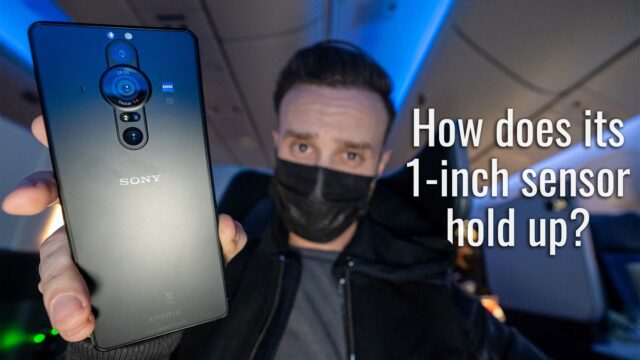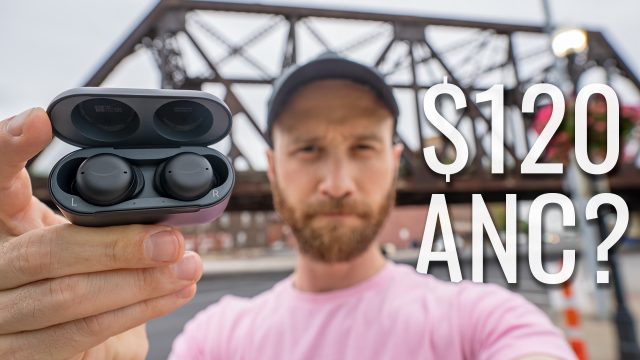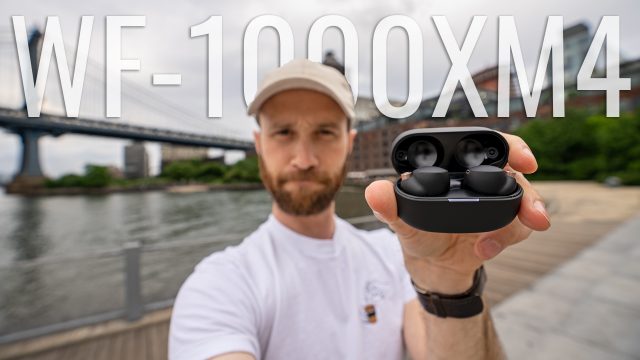Sony XB900N Complete Walkthrough: Amazing Noise Cancellation for Less
I did a video not too long ago on the Sony WH-1000M3 noise-canceling headphones and, long story, short? I (and most reviewers I know, loved them). They were good looking, had great sound and noise cancellation, were comfortable, etc. The only thing that would stop you from buying them if you were in the market for over-the-ear noise canceling headphones, was maybe the price. They are $350.

Well, it seems since the success of those headphones, Sony has been hard at work trying to get the cost down on them to try and appeal to another market/go after another competitor (which we’ll discuss later).

These are the Sony XB900N (all headphone companies need better names for these things frankly), and they are $250 instead of $350. Not a huge dip but not an insignificant one, either. So in this complete walkthrough, let’s go through everything we can about these new Bluetooth noise-canceling headphones and how they compare to their more expensive sibling.
Look and Feel

First thing you will notice about that, and most likely a way Sony got the some of the cost down, is the way the plastic feels. Both the WH-1000M3’s and these new XB900N’s are made out of a hard plastic material, but for some reason, the XB900N’s just feel a bit less premium. Not a big deal, but you notice it.

They do have the same soft-touch ear cups that are comfortable to wear though, as well as the same shape (which was upgraded starting with the WH-1000M3’s to be more comfortable and also less awkward looking by minimizing the gap between your head and the frame of the headphones).

There are only two physical buttons on the headphones: one for power and Bluetooth pairing and one is a customizable button we’ll talk about later.

All the other controls are done by swiping on the right ear cup. Up and down for volume, forward and back for song selection, double-tap to play/pause, etc.
Sound Quality/Differences
The new Sony XB900N and the WH-1000M3 headphones have similar support for higher-end audio codecs over Bluetooth like LDAC and AptX HD, etc. and as far as I can tell the sound quality is very similar to my very average ears. The one difference you’ll notice though is that the XB900N’s, as inferred by their full product name the Sony XB900N Xtra Bass Headphones, have a bit more lower-end than the WH-1000M3’s do.

You can though, just like with other Sony headphones, use the Headphones app to adjust the levels of bass, treble, etc. if you don’t want as much bass.

Also, while we’re in the app, there are settings for things level of noise cancellation you want, surround sound features, sound quality vs connection stability, using the custom button located next to the power button to trigger Google Assistant/Alexa/or toggling noise cancellation on and off, and more.
Now, something that is missing compared to the WH-1000M3’s though is the ability to adjust the sound based on your atmospheric pressure. A feature you can use when flying to adjust the sound based on a barometer built into the headphones.
Noise Cancellation
So the big deal about these headphones is the fact that they have very similar noise cancellation to the constantly praised Sony WH-1000M3. So, as with those, let’s do a test using the mic I’m talking to you on to see how the noise cancellation does on these.

First, here is the ambient noise from the loud room I’m in.

Then this is what it sounds like with my microphone inside the cup but the headphones are not turned on.

Now, turned on and connected via Bluetooth and you can hear the noise cancellation kick in once they connect.
Then here’s that compared to turning off noise cancellation.
And here is music playing (sorry for the generic, royalty free music I have to use) with noise cancellation on.

Finally, the Sony XB900N has the same ability to cover your hand over the right cup to temporarily use the microphone to let in sound so you can, say, order a drink on a flight without having to take off the headphones.
So here’s how that sounds.
While we’re talking about the microphone, Sony says the mics work well enough to have a phone call without having to take them off, so this is what I sound like using those mics to talk over the phone.
Charging/Battery Life

Sony claims the headphones have about 30 hours of playback and I have to admit that in the amount of time I’ve used them that seems like an accurate claim.
They also have fast-charging over USB-C so you can get an hour’s worth of power in just 10 minutes of charge (compared to the 5 hours of charge in 10 mins the WH-1000M3’s can do).
Case

Another thing to note is that, also unlike the WH-1000M3’s, there is no slick zipper case, just a simple drawstring bag. To help further bring the cost down, I’m sure.
Conclusion
Now, it seems to me that while the WH-1000M3’s were aimed squarely at Bose and their QuietComfort headphones, these new models with their slightly lower price point and extra bass moniker are aimed at Beats’ users.

Regardless though if you are a fan of beats or even need extra bass in your headphones or not, the fact they are $250 and they give you a lot of the same features people love about the WH-1000M3’s? They definitely feel like a good deal for what you get.
Head here for the best price I could find on the XB900N headphones.
There you go, let me know what you think in the comments below and make sure to follow me on social or subscribe to my weekly email newsletter for more tips, tricks, tech news, and videos. As always though, thanks for reading.




